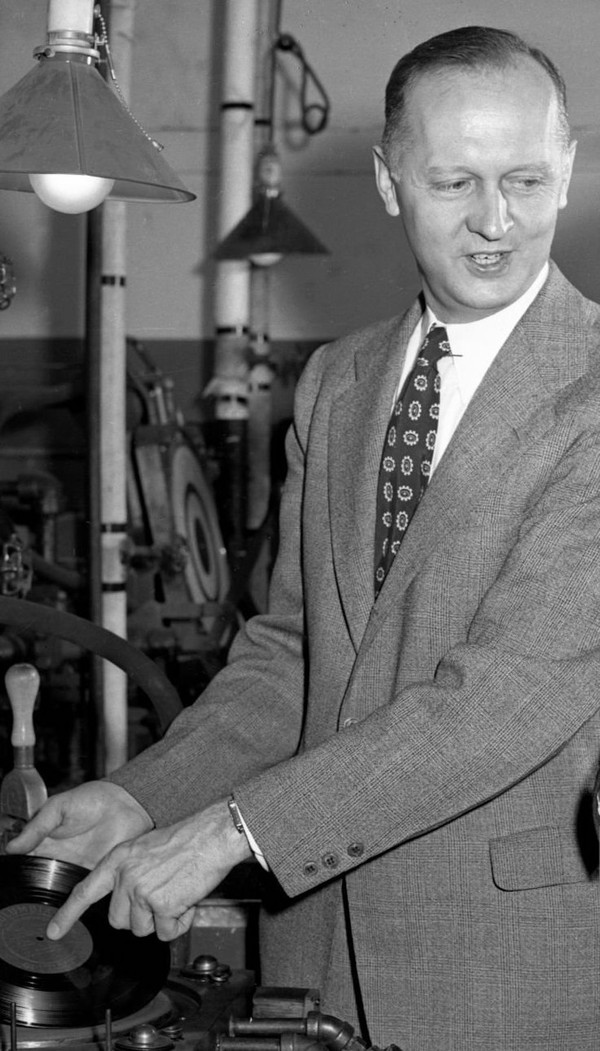William S. Bachman
Настоящее имя: William S. Bachman
Об исполнителе:
American audio engineer, inventor and distinguished high-fidelity pioneer (29 October 1908, Williamsport, Pennsylvania — 8 April 1996, Greenville, Delaware). William S. Bachman was a Director of Engineering and Research at Columbia Records, Inc., known for several crucial contributions to vinyl manufacturing technology, such as developing a 33⅓ RPM long-playing record and leading a workgroup that standardized the "RIAA equalization curve." Bachman served on numerous industry commissions, was a Senior Member (1954) and Fellow (56) of the Institute of Radio Engineers (IRE, later IEEE) and a Fellow of the Audio Engineering Society, which granted him various accolades, including the AES Silver Medal (1955) and Honorary Membership in 1973. Bachman graduated from Cornell University in 1932 with an electrical engineering degree and began working for General Electric's Radio Receiver Engineering Department the same year. His most notable design was a GE Model DM 1RM 6C variable reluctance pickup, which offered a significantly broader frequency range on phonograph discs. In 1946, Peter C. Goldmark, chief scientist at CBS Laboratories, convinced Bachman to quit GE and come to Columbia Records to work on the company's most ambitious project. With Howard H. Scott, Bachman continued Columbia's early research into a "long-playing" phonograph record that would fit at least 20 minutes of audio per side, with various attempts done as early as 1939 but halted during World War II. The company held a press conference to unveil an LP format in June 1948 at Waldorf Astoria Hotel in Midtown Manhattan, New York. The first-ever LP album, Mendelssohn's Concerto In E Minor For Violin And Orchestra Op. 64 by The New York Philharmonic Orchestra under Bruno Walter's baton, was released on Columbia Masterworks in September 1948. Bachman outlined the technical aspects of his invention in "The Columbia Long-Playing Microgroove Recording System" article, co-authored with Goldmark and his assistant, René Snepvangers, for Proceedings of the IRE, Vol. 37, No. 8 in August 1949. William Bachman continued working on various aspects of vinyl manufacturing and reproduction at Columbia Records, creating a feather-edge hot-stylus disc-cutting system, automatic variable pitch groove spacing technique, and viscous-damped reproducer tonearms. He was responsible for acoustics control and designing the equipment for the modernized Columbia Recording Studios in 1960. In 1953, Bachman joined a newly-formed Technical Committee at the Recording Industry Association of America, tasked with drafting specifications for pre/de-emphasis EQ for the new LP format. "Emphasis" equalization is a critical aspect of phonograph disc-cutting, necessary for longer duration and for reducing groove wear during playback. Since 1940, each record company has had a proprietary technology, with dozens of various turnover/roll-off EQ frequencies on the market: Columbia-78, Decca-U.S., Victor-78, BBC, NAB, Orthacoustic, FFRR-78, microgroove, AES, and numerous others. Customers struggled with diminished sound quality and highly-inconsistent results between specific albums and phonographs. Thus, RIAA decided to pre-emptively work on uniformed, industry-wide EQ standards for the uprising LP format to ensure any record will be fully compatible with all turntables. Bachman's group included representatives of all major record labels and led to the adoption of "RIAA equalization." Artist images William S. Bachman with CBS chief engineer Dr. Peter Carl Goldmark (2) and conductor Bruno Walter (3) observing the record manufacturing process; May 1948, Bridgeport, Connecticut.


